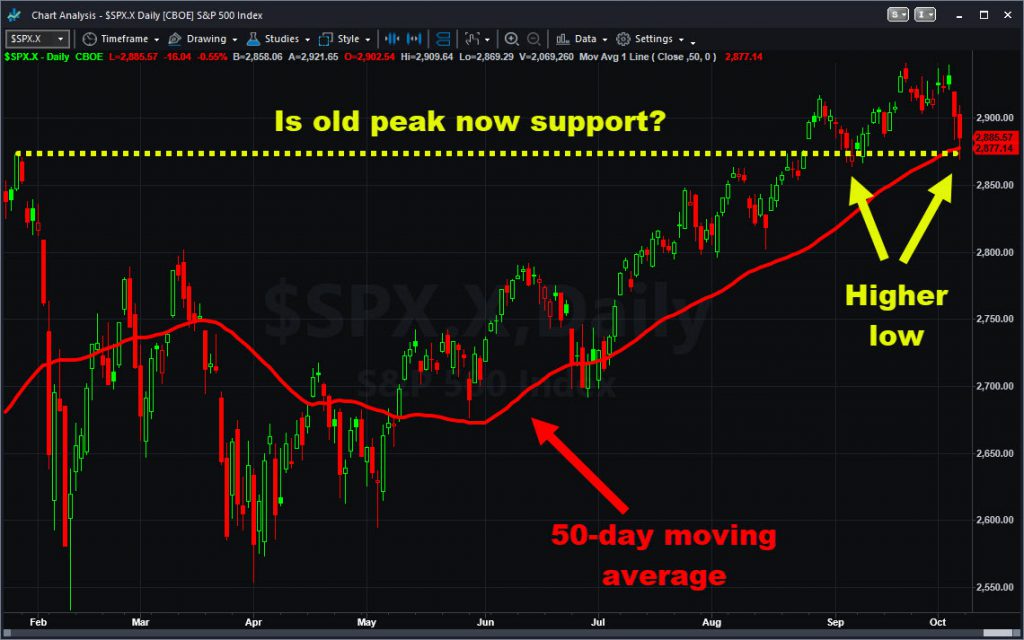Stocks began the fourth quarter in the red as interest rates spiked and money streamed out of the technology sector.
The S&P 500 slid 1 percent between Friday, September 28, and Friday, October 5. But that was nothing compared with the Nasdaq-100’s 3 percent drop — its biggest weekly decline since March.
Want to learn more about options? Sign up for our “Options Stars 2018” symposium in Chicago this month.
The selling pressure was widespread. Higher-multiple “growth” names slid as investors focused on cheaper areas like financials that may benefit from higher rates. China-related stocks fell as espionage allegations added to worries of an economic slowdown in the Asian country. That also hurt semiconductors.
Higher oil prices hammered airlines, as well. Homebuilders continued to break down from a bearish triangle as interest rates spiked.
Speaking of interest rates, did you see yields on 30-year Treasury bonds hit their highest level in over four years? Two drivers explained the move.
First, strong economic news: Labor reports showed steady employment growth, while the Institute for Supply Management’s service-sector index rose to its highest level since the 1990s.
Second, comments from Federal Reserve officials including Jerome Powell suggested the central bank will keep hiking rates well into next year.
All told, longer-term interest rates seem to finally be rising faster than short-term rates, causing the “yield curve” to steepen. Investors often view that as a positive for banks that profit from the difference between the two.
Then you have crude oil spiking to a new long-term high as speculators looked for sanctions against Iran to squeeze global energy supplies. (Higher oil prices also lift longer-term rates by stirring inflation.)

Getting back to the S&P 500, the index tested its 50-day moving average for the first time since the start of July. It also bounced at its January peak of 2873 and made a higher low than its trough in September. Some chart watchers may conclude its longer-term uptrend remains intact.
One company with no uptrend to be intact is fiber-optic supplier IPG Photonics (IPG). Trade tensions caused management to cut guidance, making it the S&P 500’s biggest loser with a 15 percent weekly drop. Nektar Therapeutics (NKTR) and Edwards Lifesciences (EW) followed with declines of 14 percent and 13 percent, respectively.
General Electric (GE) found itself at the other end of the performance table, ripping 17 percent on a leadership change. (The news came just one session after a large bullish options trade.) Eli Lilly (LLY) was runner-up, breaking to a new all-time high on positive drug news.
This week begins quietly with the Columbus Day and builds up to the start of earnings season.
The producer-price index is the first big event on Wednesday. Consumer prices, jobless claims and oil inventories follow the next session.
JPMorgan Chase (JPM), Citigroup (C) and Wells Fargo (WFC) issue their quarterly results on Friday morning. Consumer sentiment is due shortly after the opening bell.





















